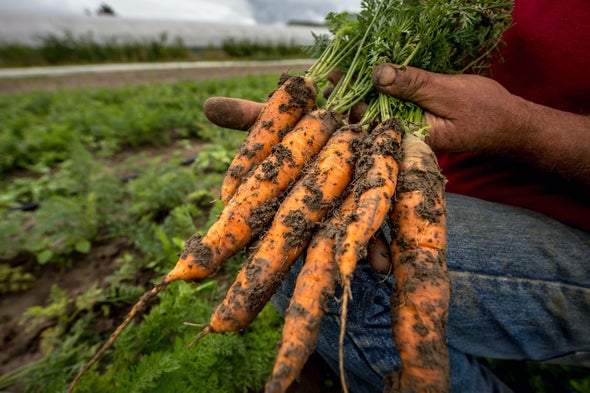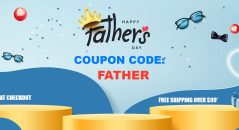Subscribe: Spotify | Email | TuneIn | RSS
Tony, Nutriodine, 4 Amazing Plasma Iodine Properties, Makes New Mitochondria, Detoxes Halides Fluoride Chloride Bromide, Kills All Pathogens, Raises Cell ATP NADH Energy Redox Millivoltage, Farid, KardioVasc, 7 Synergist Herbs, Tests on All Batches Tight Window Levels, Stop Plaque, Reduce Viscosity, Protect Vessel Walls, Improve Heart Vessel Mitochondrial Contractions, Stop Clots and Emboli, Prevent Calcification, Prevent Heart Attack Stroke and Poor Circulation, Drew, ProMAG, ProMAG Pain Relief Cooling Gel, ProMAG Performance Gel, Remineralize, Heal Joints and Fluid, Restore Gene Mineral Induction, Reduce Inflammation, Improve Pain Control and Comfort, Dr Bill Deagle MD AAEM ACAM A4M, NutriMedical Report Show, www.NutriMedical.com, www.ClayandIRON.com, www.Deagle-Network.com,NutriMedical Report Show,
U.S. agricultural soil depleted of 85 percent of minerals in 100 years
Posted on August 15, 2014 by Health Freedom Advocate
According to the Nutrition Security Institute (www.nutritionsecurity.org), U.S. soil is eroding 10 times faster than it can be replenished. Researchers who compiled reports from around the world conclude that U.S. agricultural soil has been depleted of 85 percent of its minerals and vitamins during the last 100 years.
Other parts of the globe report similar or worse soil conditions. In 1914, the report says, there were 400 mgs of (sums of averages) of calcium, magnesium and iron in U.S. cabbage, lettuce, tomatoes and spinach. In 1997 (the last years figures were available), that mineral content had shrunk to 75 mgs.
“The soil lacks the nutrients to keep people healthy and they become susceptible to disease,” said report authors John B. Marler and Jeanne R. Wallin. The problem, according to a study undertaken by head researcher Don Davis, of the University of Texas Austin’s Department of Chemistry and Biochemistry, is that modern agricultures’s focus has been on size, growth rate and pest resistance, not nutritional content of the plants produced. The plants, unable to keep up with growth, cannot manufacture and fully uptake soil nutrients.
Nutrition Security published graphs that showed the increase of various diseases in tandem with the decrease in nutritional (vitamin/mineral) content of our foods.
The Davis study was based on USDA nutritional data between 1950 and 1999, and was published in the December, 2004 Journal of the American College of Nutrition. The study included 43 different vegetables and fruits and without fail, found a steady decline in protein, calcium, phosphorus, iron, riboflavin (vitamin B2), and vitamin C.
Another analysis by Japan’s Kushi Institute (1975-1997) found that calcium levels in 12 vegetables dropped 27 percent in that time period, iron levels dropped 37 percent, vitamin C dropped 30 percent and vitamin A dropped 21 percent. A study published in the British Food Journal concluded that we would have to eat 8 oranges to ingest the same amount of vitamin A that our grandparents got from one orange.
And numerous macrominerals have virtually disappeared from the soil.
“Sadly, each successive generation of fast-growing, pest resistant carrot is less good for you than the one before,” says Scientific American, which hastens to add that fruits and vegetables are indeed still good for us, the fresher and more organic and pesticide-free, the better.
Since the studies are based on data more than a decade old, it appears to be unknown how much soil condition has worsened in this time of ever-increasing pesticide use and genetically modified crops.
On the bright side, soil restoration and the local organic food movement is growing, as are the number of people realizing that high-quality mineral and vitamin supplements are essential in counteracting the deficiency of those life-giving components in Big Ag crops.
USDA crop standards focus on size, shape and color, not biologically alive soil and nutritional values. So it’s up to us to pay attention to our nutrition and demand a reversal of Big Ag’s destructive agricultural model.
Sources: www.scientificamerican.com, www.nutritionsecurity.org
http://thehealthmoderator.com/u-s-agricultural-soil-depleted-85-percent-minerals-100-years/
Dirt Poor: Have Fruits and Vegetables Become Less Nutritious?
https://www.scientificamerican.com/article/soil-depletion-and-nutrition-loss/
Because of soil depletion, crops grown decades ago were much richer in vitamins and minerals than the varieties most of us get today

Dear EarthTalk: What’s the nutritional difference between the carrot I ate in 1970 and one I eat today? I’ve heard that that there’s very little nutrition left. Is that true?—Esther G., Newark, N.J.




